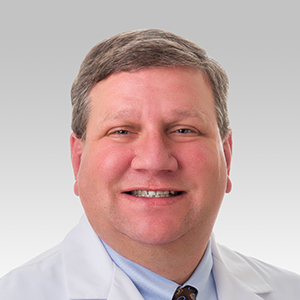7 Myths About Rheumatic Disease
Published March 2022
The Most Common Misconceptions About Rheumatic Disease
There are more than 100 types of rheumatic disease and more than 50 million Americans of all ages and genders live with a rheumatic condition. Unfortunately, the symptoms are often dismissed and a variety of misconceptions can often delay people from seeking help. Furthermore, early treatment is the most crucial to minimize side effects and improve long-term health.
“No one should have to live with chronic, persistent, and mysterious pain,” says Eric M. Ruderman, MD, a rheumatologist with Northwestern Medicine. “Seeing a rheumatologist within the first weeks and months of disease onset can dramatically improve long-term outcomes for patients, so it is important to know what to look for and when to ask for a referral to a trained specialist.”
To that end, here are seven myths about rheumatic disease.
Myth No. 1: Rheumatic disease is another name for arthritis.
Rheumatic diseases fall under the umbrella term of arthritis, but they are specifically autoimmune and inflammatory diseases that cause the immune system to attack joints, muscles, bones and organs. Rheumatic diseases can include rheumatoid or juvenile arthritis, but also encompasses psoriatic arthritis, ankylosing spondylitis, lupus, gout and scleroderma.
Myth No. 2: Symptoms are just aches and pains.
The symptoms of rheumatic disease can be difficult to pinpoint and are often dismissed as just aches and pains. But rheumatic conditions can cause patients to develop deformities so severe that they can ultimately make daily tasks, like walking or getting dressed, feel impossible.
Some common symptoms of rheumatic disease include:
- Joint or muscle pain
- Inflammation, swelling, redness, or stiffness of joints
- Eye irritation and inflammation
- General fatigue and malaise
- Fevers
- Hair loss
- Dry eyes or mouth
- Chest pain
- Seizures or stroke
If you experience these symptoms, it’s important to take them seriously and speak with your primary care physician.
Myth No. 3: You don’t need treatment until your symptoms get bad.
If you begin to notice the symptoms of rheumatic disease, it’s imperative that you talk to your primary care physician about your symptoms and whether they are a sign of something serious.
The first weeks and months following the onset of symptoms are known as the “window of opportunity.” Treatment during the window of opportunity may help prevent long-term complications. Receiving care within the first 12 weeks can increase the likelihood of remission and prevent damage to joints and organs.
Myth No. 4: You don’t need to see a specialist.
Your primary care physician will refer you to a rheumatologist if your symptoms indicate a rheumatic disease. Rheumatologists specialize in diagnosing, managing and treating rheumatic disease to address co-existing diseases and ease disability. They are trained to identify rheumatic disease and determine appropriate treatment, including medications and monitoring.
Myth No. 5: Rheumatic disease only affects the elderly.
Rheumatic disease often strikes in the prime of life. In fact, two-thirds of people living with rheumatic disease are under the age of 65. Moreover, rheumatic disease also affects an estimated 300,000 children and leads to disability, blindness and other complications if not treated early.
Myth No. 6: Rheumatic disease only affects women.
Rheumatic disease affects both men and women. While women are disproportionately affected, 5 percent of men in the U.S. will be diagnosed with a rheumatic disease during their lifetime. In particular, men are far more likely than women to develop gout.
Myth No. 7: Rheumatic disease will go away with time.
Unfortunately, rheumatic diseases tend to be chronic conditions, meaning there is no definitive resolution. Early and ongoing treatment can maintain and improve functionality and reduce the risk of disability and surgery. Most treatment involves medication for pain and inflammation, though some diseases require specific medication that your rheumatologist will identify and discuss with you. While there is no cure for rheumatic disease, safe and effective care plans allow many people to lead full and fulfilling lives even with their diagnosis.






